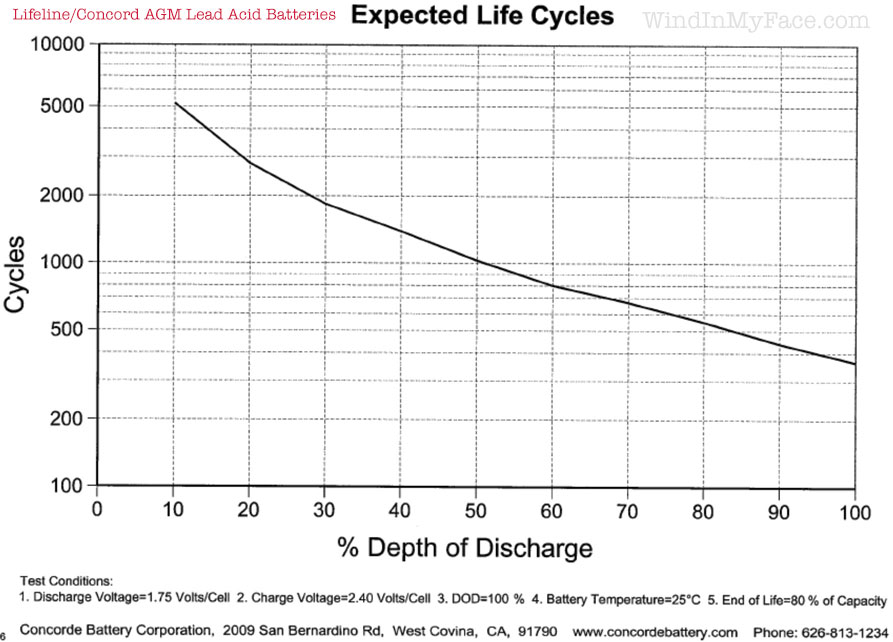
$220 SAVE $130 = 37.0% Western Digital 16.0TB Western Digital Ultrastar DC HC550 3.5-in… in Storage: Hard Drives
|

|

|

|

|
RV Batteries: Lead Acid Batteries
Photographer and cyclist and Mac expert and software engineer Lloyd Chambers is available for consulting on general Sprinter considerations at his usual consulting rates via phone, or in person in the Palo Alto, CA area. Save yourself hours and mistakes by discussing issues up-front. More about Lloyd....
Get your batteries and alternator and regulator (the whole kit!) from NationsStarterAlternator.com.

Conventional lead acid AGM batteries are excellent in many use cases—but do not skimp on quality.
Update: based on field usage, this site strong recommends the Lithionics lithium-iron-phosphate battery. Capable of being drawn down by 90% to 10% Soc (State of Charge) for 2700 charge cycles (a decade of heavy use), the Lithionics outperforms lead acid batteries by at least a factor of 3X, and is much lighter and more compact. The price is high but the value is higher.
...
My choice before tentatively choosing lithium batteries was the Lifecycle (Concorde) 6V batteries (wired in series for 12 volts) such as two of the GPL-L16T or GPL-6CT.
Using two 6V batteries in series for 12 volts afford much greater power capacity with lower battery weight and higher amperage—see the specification sheets on Lifeline site.
Lead acid batteries are twice as heavy and bulky (at least) for the real power provided. They also have two key advantages:
- A vehicle alternator can charge a lead acid battery to 100%. It might not charge a lithium battery to more than 9o%, possibly 95% at best—so lop off 5% to 10% off the capacity unless there is some trickle charging ability via shore power or solar.
- Lead acid batteries are OK in the cold (but use a temperator sensing multi-stage charger). Lithium batteries must have a charger or feature to prevent charging when too cold, to avoid battery damage.
- In general, lead acid batteries are brutes that are fairly straightforward, and time tested/proven. Lithium batteries must be treated with more care (charging, temperature, etc). Cheap lithium batteries carry a much higher risk of problems.
Limitations under significant power draw
Voltage losses from cabling are a critical consideration. See Planning for Voltage Losses from Cabling and Battery.
Cycle count vs depth of discharge
While lead acid deep cycle AGM batteries can be drained by 80%, the cycle life even for high-grade batteries such as the Lifeline/Concorde drops from about 1000 cycles down to about 600 cycles, which may be unacceptably short (and thus expensive) over a 5 to 10 year time frame, as shown below. On the other hand, if the actual usage is a few weeks or months over a year, the cycle life even at 80% discharge is good for the full life of the battery (5+ years), so it is irrelevant. For those living in an RV, it might not be acceptable unless fewer discharge cycles are used.
For more on depth of discharge versus cycle life, and how to think about it in ways that might step outside the conventional false dichotomy, see Depth of Discharge vs Cycle Count.
The graph below is for high grade Lifecycle (Concorde) lead acid AGM batteries; the lithium batteries from Lithionics have a cycle count that at 80% discharge is at least 3X better.

Seagate 22TB IronWolf Pro 7200 rpm SATA III 3.5" Internal NAS HDD (CMR)
SAVE $100



